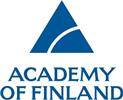Home > Press > Simulations predict flat liquid
 |
Abstract:
Computer simulations have predicted a new phase of matter: atomically thin two-dimensional liquid.
Simulations predict flat liquid
Helsinki, Finland | Posted on May 21st, 2015This prediction pushes the boundaries of possible phases of materials further than ever before. Two-dimensional materials themselves were considered impossible until the discovery of graphene around ten years ago. However, they have been observed only in the solid phase, because the thermal atomic motion required for molten materials easily breaks the thin and fragile membrane. Therefore, the possible existence of an atomically thin flat liquid was considered impossible.
Now researchers from the Nanoscience Center at the University of Jyväskylä, led by Academy Research Fellow Pekka Koskinen, have conducted computer simulations that predict a liquid phase in atomically thin golden islands that patch small pores of graphene. According to the simulations, gold atoms flow and change places in the plane, while the surrounding graphene template retains the planarity of liquid membrane.
"Here the role of graphene is similar to circular rings through which children blow soap bubbles. The liquid state is possible when the edge of graphene pore stretches the metallic membrane and keeps it steady", Koskinen says.
The liquid phase was predicted by computer simulations using quantum-mechanical models and nanostructures with tens or hundreds of gold atoms. The prediction was published recently in the esteemed journal Nanoscale. Currently the liquid state exists only in computers and is still waiting for experimental confirmation.
"Unfortunately, simulations suggest that the flat liquid is volatile. In experiments the liquid membrane might burst too early, like a soap bubble that bursts before one gets a proper look at it. But again, even graphene was previously considered too unstable to exist," Koskinen says.
###
The research was funded by the Academy of Finland and used the computing infrastructure provided by CSC.
####
For more information, please click here
Contacts:
Pekka Koskinen
358-403-564-460
Copyright © Academy of Finland
If you have a comment, please Contact us.Issuers of news releases, not 7th Wave, Inc. or Nanotechnology Now, are solely responsible for the accuracy of the content.
| Related Links |
| Related News Press |
News and information
![]() Researchers develop molecular qubits that communicate at telecom frequencies October 3rd, 2025
Researchers develop molecular qubits that communicate at telecom frequencies October 3rd, 2025
![]() Next-generation quantum communication October 3rd, 2025
Next-generation quantum communication October 3rd, 2025
![]() "Nanoreactor" cage uses visible light for catalytic and ultra-selective cross-cycloadditions October 3rd, 2025
"Nanoreactor" cage uses visible light for catalytic and ultra-selective cross-cycloadditions October 3rd, 2025
Graphene/ Graphite
![]() Electrifying results shed light on graphene foam as a potential material for lab grown cartilage June 6th, 2025
Electrifying results shed light on graphene foam as a potential material for lab grown cartilage June 6th, 2025
![]() Breakthrough in proton barrier films using pore-free graphene oxide: Kumamoto University researchers achieve new milestone in advanced coating technologies September 13th, 2024
Breakthrough in proton barrier films using pore-free graphene oxide: Kumamoto University researchers achieve new milestone in advanced coating technologies September 13th, 2024
Possible Futures
![]() Spinel-type sulfide semiconductors to operate the next-generation LEDs and solar cells For solar-cell absorbers and green-LED source October 3rd, 2025
Spinel-type sulfide semiconductors to operate the next-generation LEDs and solar cells For solar-cell absorbers and green-LED source October 3rd, 2025
Discoveries
![]() Researchers develop molecular qubits that communicate at telecom frequencies October 3rd, 2025
Researchers develop molecular qubits that communicate at telecom frequencies October 3rd, 2025
![]() Next-generation quantum communication October 3rd, 2025
Next-generation quantum communication October 3rd, 2025
![]() "Nanoreactor" cage uses visible light for catalytic and ultra-selective cross-cycloadditions October 3rd, 2025
"Nanoreactor" cage uses visible light for catalytic and ultra-selective cross-cycloadditions October 3rd, 2025
Announcements
![]() Rice membrane extracts lithium from brines with greater speed, less waste October 3rd, 2025
Rice membrane extracts lithium from brines with greater speed, less waste October 3rd, 2025
![]() Researchers develop molecular qubits that communicate at telecom frequencies October 3rd, 2025
Researchers develop molecular qubits that communicate at telecom frequencies October 3rd, 2025
![]() Next-generation quantum communication October 3rd, 2025
Next-generation quantum communication October 3rd, 2025
![]() "Nanoreactor" cage uses visible light for catalytic and ultra-selective cross-cycloadditions October 3rd, 2025
"Nanoreactor" cage uses visible light for catalytic and ultra-selective cross-cycloadditions October 3rd, 2025
Interviews/Book Reviews/Essays/Reports/Podcasts/Journals/White papers/Posters
![]() Spinel-type sulfide semiconductors to operate the next-generation LEDs and solar cells For solar-cell absorbers and green-LED source October 3rd, 2025
Spinel-type sulfide semiconductors to operate the next-generation LEDs and solar cells For solar-cell absorbers and green-LED source October 3rd, 2025
![]() Rice membrane extracts lithium from brines with greater speed, less waste October 3rd, 2025
Rice membrane extracts lithium from brines with greater speed, less waste October 3rd, 2025
|
|
||
|
|
||
| The latest news from around the world, FREE | ||
|
|
||
|
|
||
| Premium Products | ||
|
|
||
|
Only the news you want to read!
Learn More |
||
|
|
||
|
Full-service, expert consulting
Learn More |
||
|
|
||








